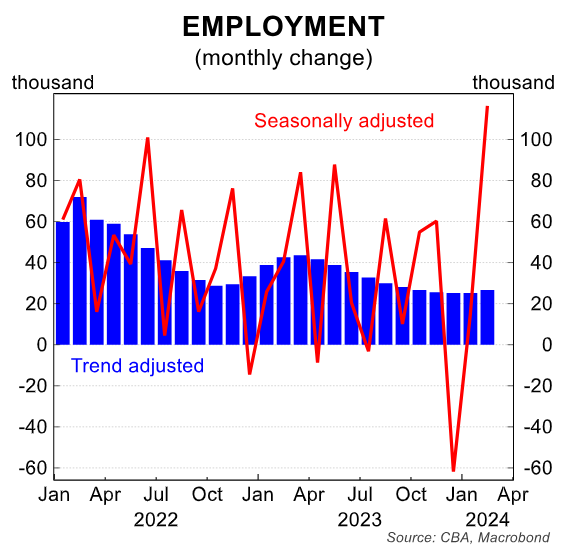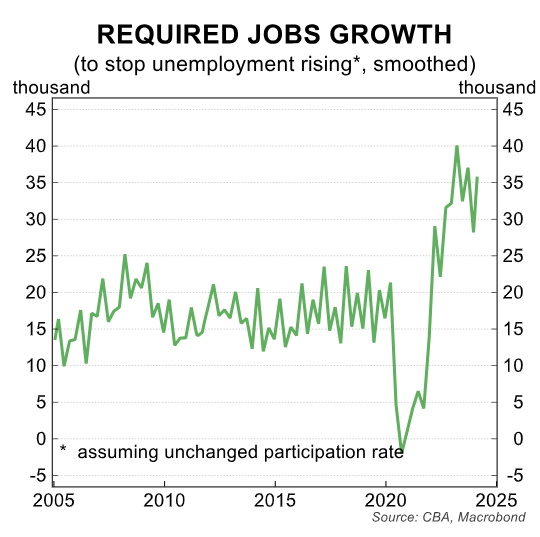By Belinda Allen, senior economist at CBA:
Key Points:
- Employment rose by 116.5k in February as more people started and returned to jobs after leaving them in December and January.
- The unemployment rate fell to 3.7%.
- The monthly labour force figures have become even more volatile, challenging the interpretability.
Volatility to the extreme
We had expected a statistical payback in the employment numbers in February.
The ABS had noted in the January release that more people were waiting to start or return to a job than normal. This scenario eventuated in February with employment rising by 116.5k in the month, well above CBA’s forecast(+45k) and the market (+40k).

In the media release the ABS noted “The large increase in employment in February followed larger-than-usual numbers of people in December and January who had a job that they were waiting to start or to return to. This translated into a larger-than-usual flow of people into employment in February and even more so than February last year.”
The large gain in February came after a large fall in December (-62k) and a modest lift in January (+15k, was initially reported as flat).
The volatility in the seasonally adjusted numbers has been large and has made it harder to interpret the underlying trend of the labour market.

We have also seen relatively large revisions in the trend series. Trend employment growth is now moving higher again, compared to trending lower in January. Trend employment rose by 26k in February and 25k in January (initially reported as 7.4k).
The trend unemployment rate has been 3.8% for six months. The unemployment rate fell by 0.4%pts in February. It now sits at 3.7%, down from 4.1% in January. The underemployment rate fell by 0.1%pt to 6.6%.
The participation rate has also seen some revisions. The participation rate was 66.7% in February, up from 66.6% in January (initially reported as 66.8%).
The lift in employment meant we saw a large bounce in hours worked in February. A lift of 2.8% was recorded in the month, hours worked are up by 0.8%/yr. This compares to employment growth of 3.2%/yr to February.
Part-time employment has outpaced full-time employment over the past year, at 7.0%/yr compared to just 1.5%/yr. We suspect this is evidence of a cooling labour market.
The current cohort of labour market data is not matching the weak growth picture in the National Accounts or other second tier labour market data like jobs ads and applicants per job from Seek.

We suspect we will receive some payback in the March numbers and will see the data converge.

The RBA will be able to get a fuller picture of labour market at the 7 May Board meeting with March data released ahead of that meeting.
We will need this March labour force numbers to understand how volatile this print is given the seasonality issues apparent in the survey.

